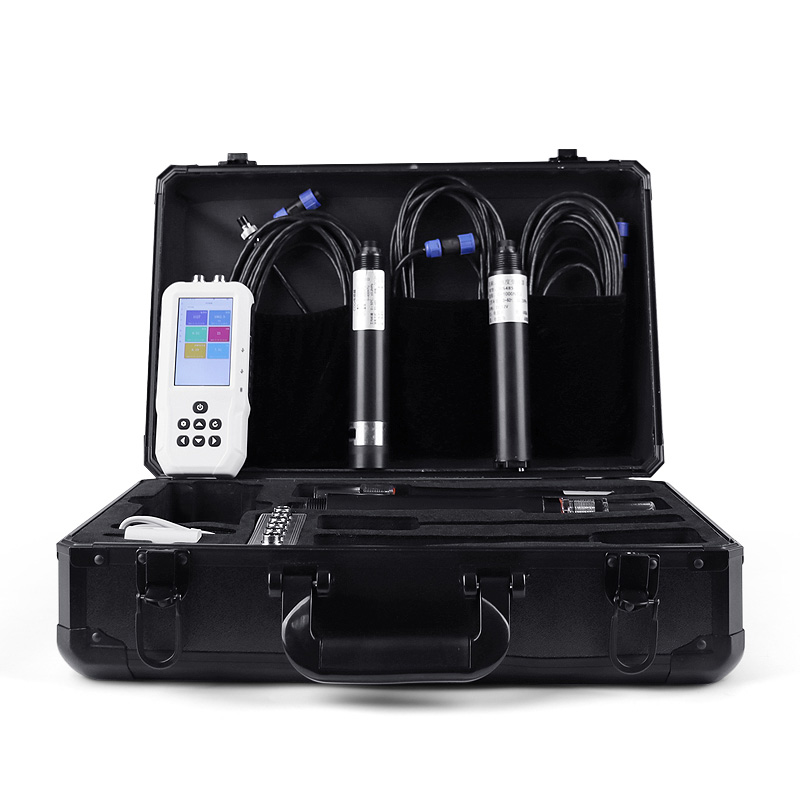Tianyi Sensor IOT Technology Co., Ltd
Sales Manager:Ms. Emily Wang
Cel,Whatsapp,Wechat:+86 15898932201
Email:info@fengtutec.com
Add:No. 155 Optoelectronic Industry Accelerator, Gaoxin District, Weifang, Shandong, China

Sales Manager:Ms. Emily Wang
Cel,Whatsapp,Wechat:+86 15898932201
Email:info@fengtutec.com
Add:No. 155 Optoelectronic Industry Accelerator, Gaoxin District, Weifang, Shandong, China

Model:FT-SS4
Brand:tianyi
1.Introduction to Chlorine Analyzers Products
Chlorine Analyzers are designed to measure free chlorine or chlorine dioxide and are suitable for monitoring or controlling chlorine in seawater, process, drinking and wastewater.SS4 model Chlorine Analyzers is an electrode method water quality analysis instrument that uses full digital electrode detection to detect residual chlorine parameters in water quality.The instrument is equipped with a self-developed FTIOT operating system, which has simple operation, stable performance, accurate measurement, wide detection range, and has a built-in high-capacity rechargeable lithium battery, which is convenient for users to conduct water quality inspection at any time in the field and in the laboratory.
2.Chlorine Analyzers host parameters
| Charging input voltage | 4.5V-5.5V |
| Charging current | <2A |
| Screen size | 3.5 inches |
| Screen resolution | 480*800☆ |
| Screen interface | MIPI DSI☆ |
| USB port | 2 (Support external expansion of mouse, keyboard, 4G, etc.)☆ |
| Type-C | 1 (Support external expansion of mouse, keyboard, 4G, etc.)☆ |
| RS485 | 2 (Support Modbus, json, asc input, etc.) |
| External sensor power supply voltage | 12V |
| External sensor power supply current | 1A |
| operating system | ftiot (based on Linux-5.4)☆ |
| CPU | 2*Cotex-A7, 650Mhz☆ |
| RAM | 512M DDR3☆ |
| Flash | 8G-64G |
| OpenGL | ES 2.0☆ |
| Wifi | support |
| 4G | Selection |
| button | support |
| Capacitive touch screen | support |
| Software Architecture | B/S☆ |
| Web access | Support ☆ |
| MTP mode | Support ☆ |
| Multi-terminal login | Support ☆ |
| IPV6 | Support ☆ |
| Sensor communication method | RS485, TCP, UDP, Http☆ |
| Data forwarding method | RS485, TCP, UDP, Http☆ |
| Remote SSH | Support ☆ |
| Remote debugging | Support ☆ |
3.Chlorine Analyzers sensor parameters and configuration
| Serial number | name | Measurement range | principle | Measurement accuracy | Configuration | Remark |
| 1 | temperature | 0~50℃ | High-precision digital sensor | ±0.3℃ | ||
| 2 | pH | 0~14 (ph) | Electrochemistry (salt bridge) | ±0.1PH | ||
| 3 | ORP | -1500mv~1500mv | Electrochemistry (salt bridge) | ±6mv | ||
| 4 | Conductivity | 0~5000uS/cm, 0~10000uS/cm | Contact electrode method | ±1.5% | ||
| 5 | TDS | 0~20μS/cm (TDS 0-10mg/L) | Contact electrode method | ±1.5% | ||
| 6 | salinity | 0-2.5ppt or 0-80ppt | Contact electrode method | ±0.05ppt or ±1ppt | ||
| 7 | Sludge concentration | 0~20.000g/L | Scattering light method | ±5% (depending on sludge homogeneity) | ||
| 8 | Turbidity | 0~40NTU (low turbidity) | Scattering light method | ±1% | Optional | |
| 0~1000NTU (medium turbidity) | Scattering light method | ±1% | ||||
| 0~3000NTU (high turbidity) | Scattering light method | ±1% | ||||
| 9 | Dissolved oxygen | 0~20mg/L | Fluorescence life method | ±2% | ||
| 10 | Ammonia nitrogen | 0-1000.00mg/L (default) 0-100.00mg/l/ (customizable) | Ion Selection Electrode Method | 10% of reading, ±0.5℃ | ||
| 11 | Suspension | 0~2000mg/L | Scattering light method | ±5% (depending on sludge homogeneity) | ||
| 12 | Residual chlorine | 0~5.00mg/L | Ion Selection Electrode Method | ±5% of reading | ✔ | The best accuracy is when the flow rate is 0.42m/s-0.85m/s |
| 13 | Chloride ions | 0-3500.0mg/L | Ion Selection Electrode Method | ±5% | ||
| 14 | Total hardness | 0~1000.0mg/L | Ion Selection Electrode Method | ±10% of reading | ||
| 15 | cod | 0~500mg/L | UV254 absorption method | ±5% | COD and chlorophyll have automatic cleaners, which can prevent biological adhesion and avoid light window pollution, so as to ensure that long-term monitoring is still stable; automatic cleaning time and cleaning times can be set, and the power consumption is 0.7W | |
| 16 | Chlorophyll | 0~400ug/L | Fluorescence method | R2>0.999 |
In the field of wind power generation, accurate measurement of wind speed and direction is essential for wind farm site selection, wind turbine power characteristic research, and generator set power control.Traditional mechanical anemometers suffer from issues such as wear and aging of moving parts,...
Ultrasonic resonance anemometry is a commonly used meteorological observation technology. Its principle is to utilize the propagation characteristics of ultrasonic waves in the air to measure wind speed and wind direction. When sound waves propagate in the air, their speed will be affected by the wi...
Weather conditions have always been a key factor affecting crop growth and harvest. Alas! Frequent meteorological disasters have brought great crises to agriculture!Drought, a common meteorological disaster, results from prolonged precipitation scarcity, leading to soil water shortage and dry air. C...
In numerous meteorological monitoring and related fields, accurately measuring wind speed and direction is of great significance. From the perspective of large-scale meteorological research, understanding accurate data of wind speed and direction helps meteorological departments better predict weath...